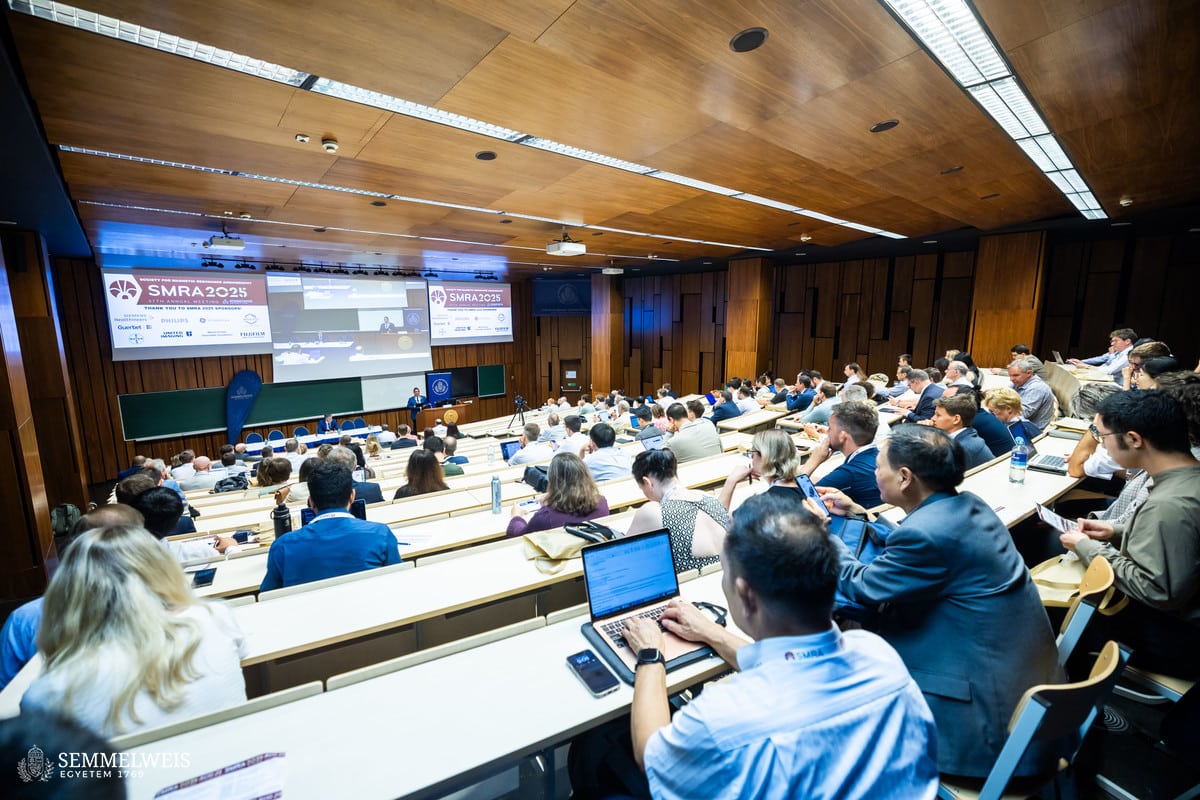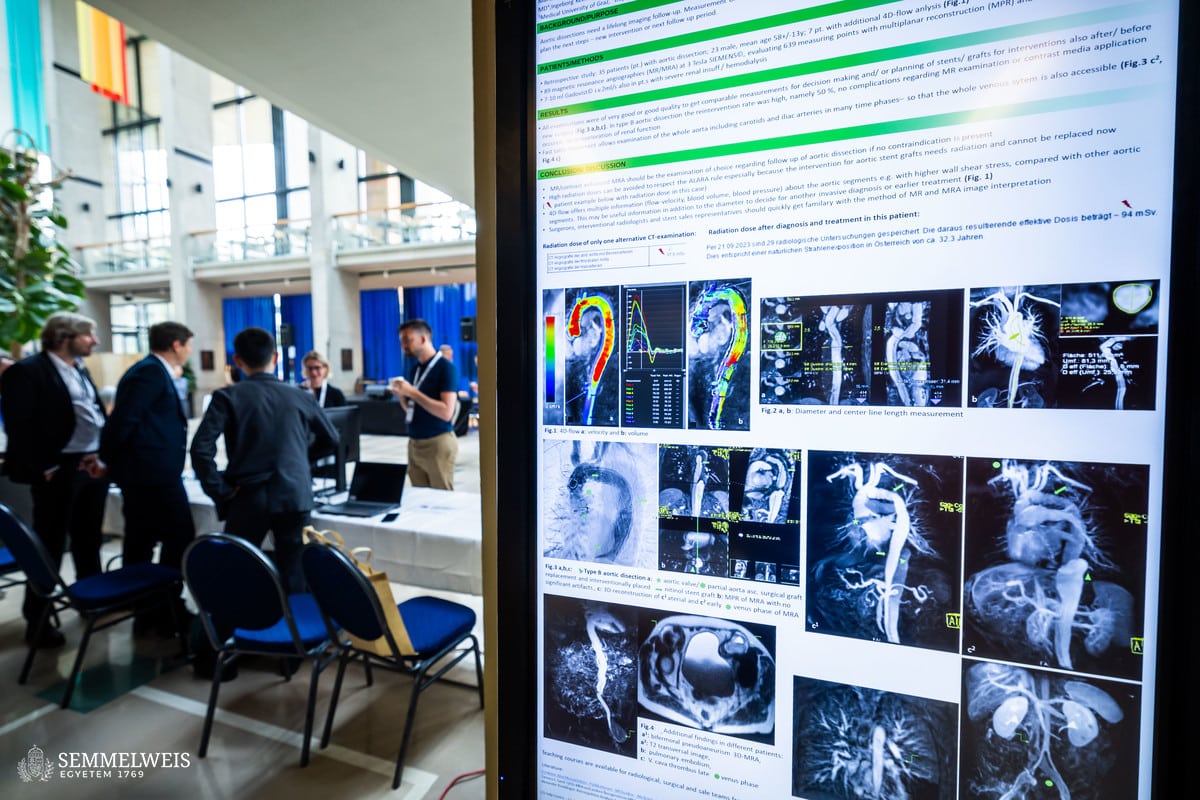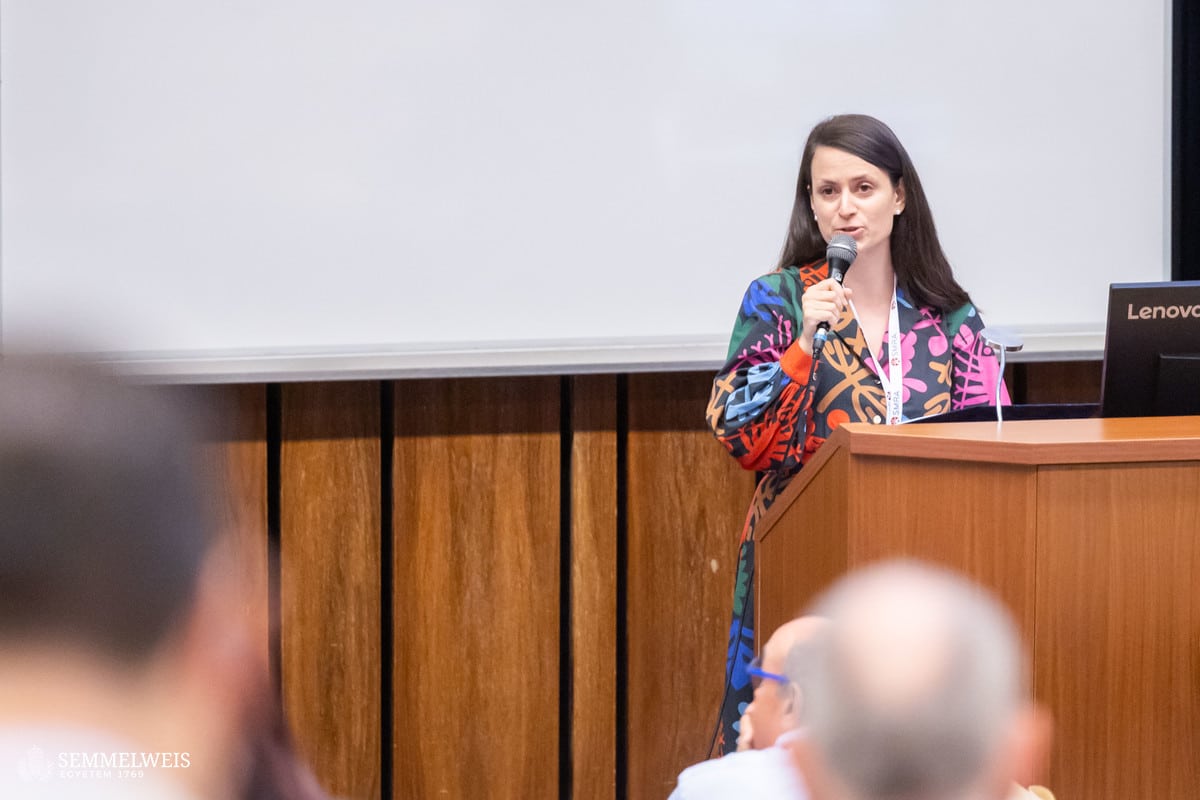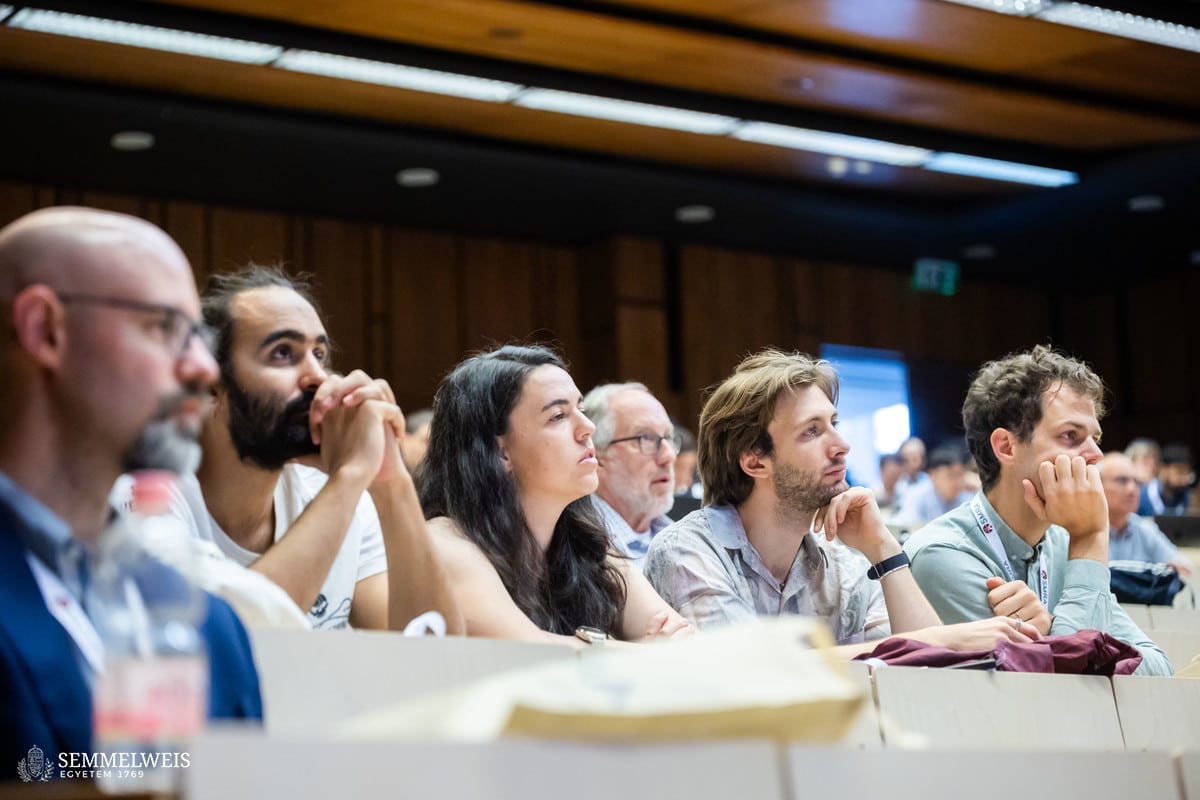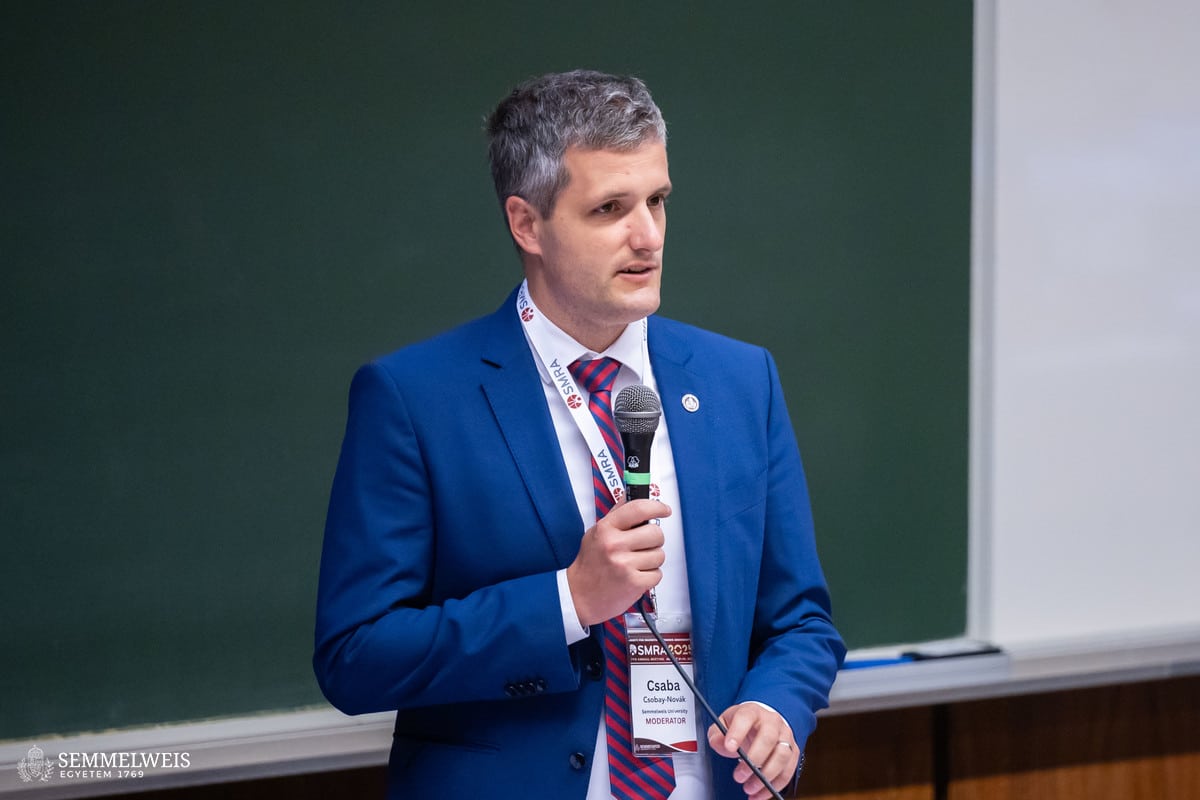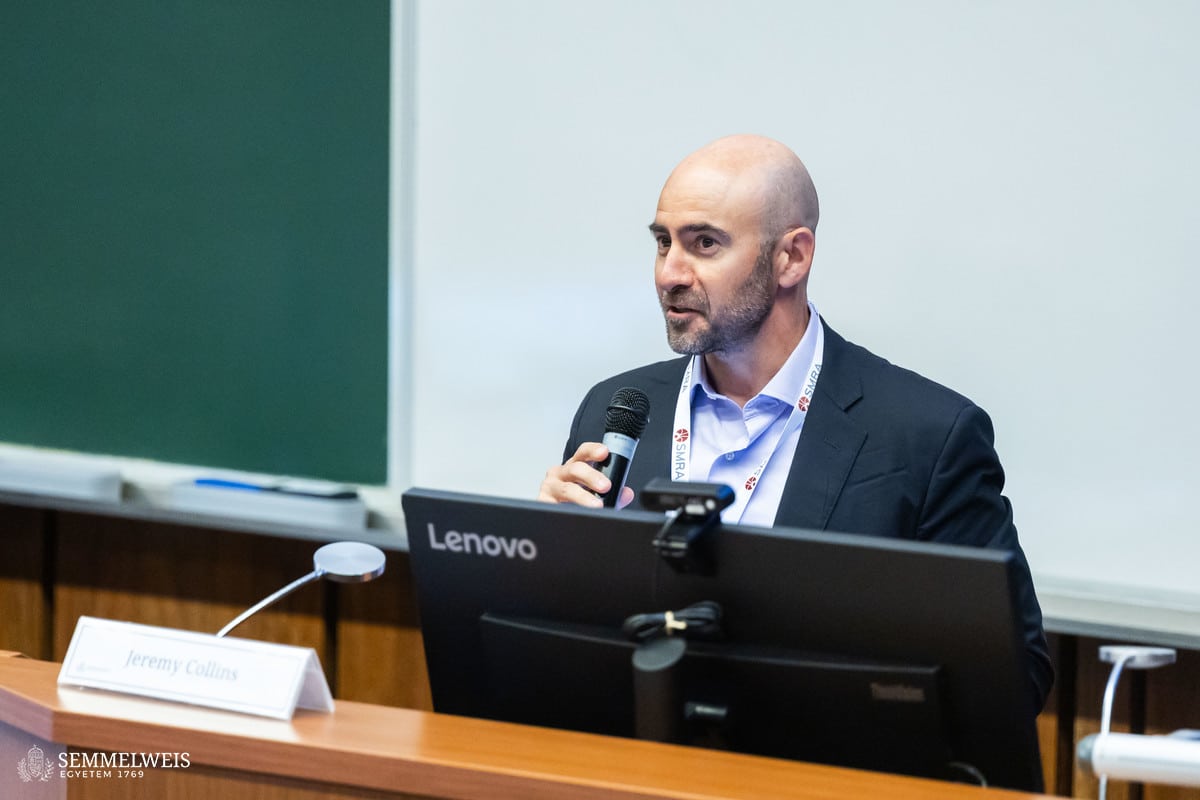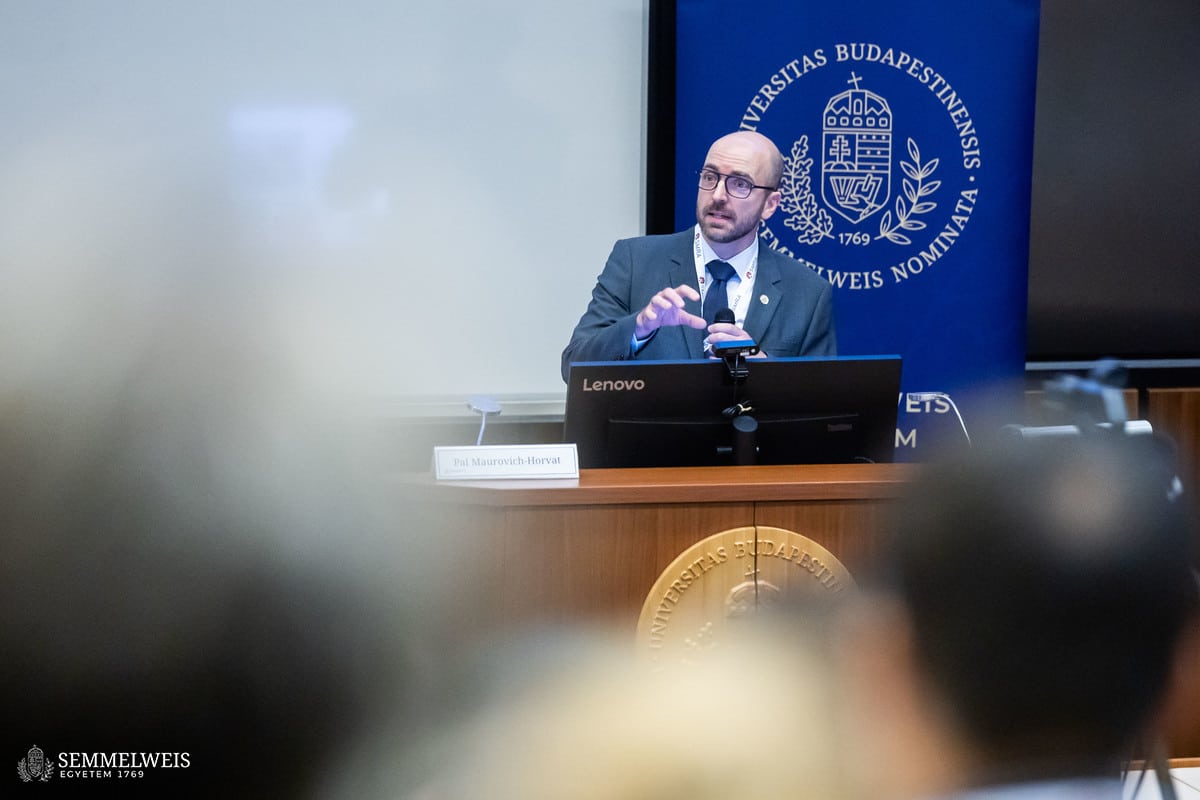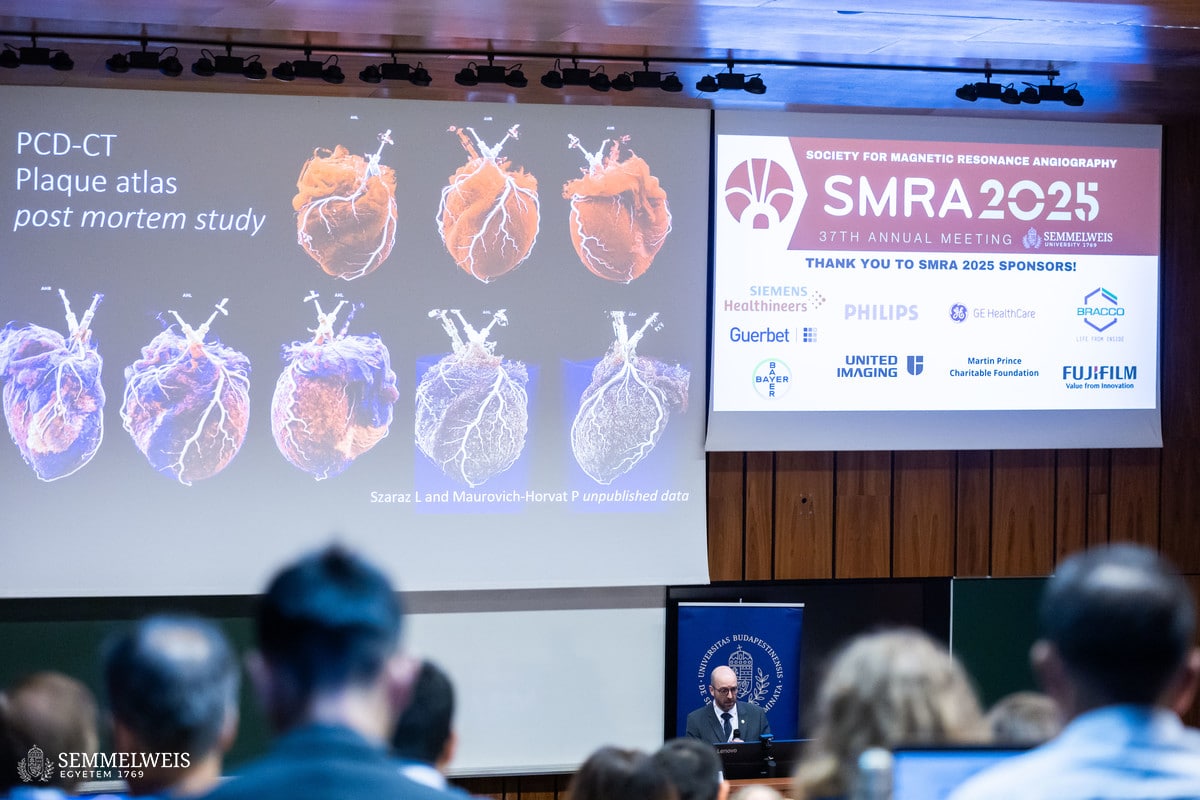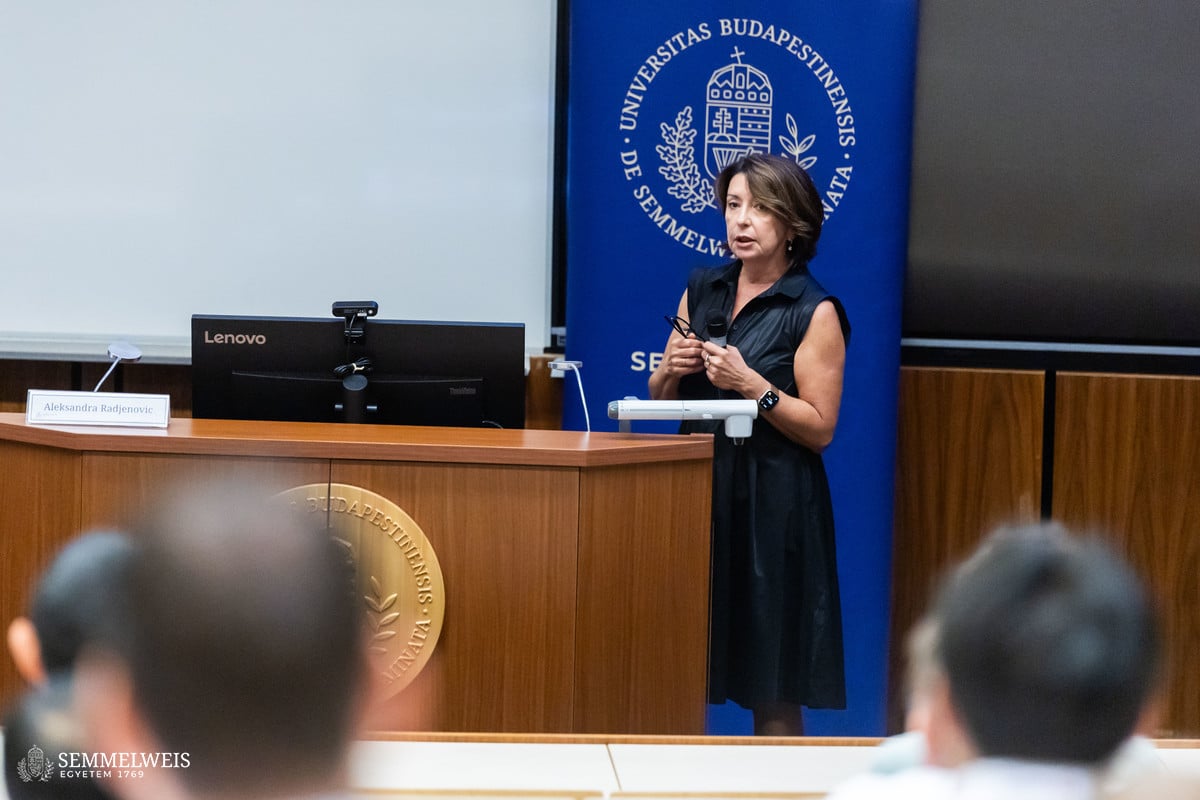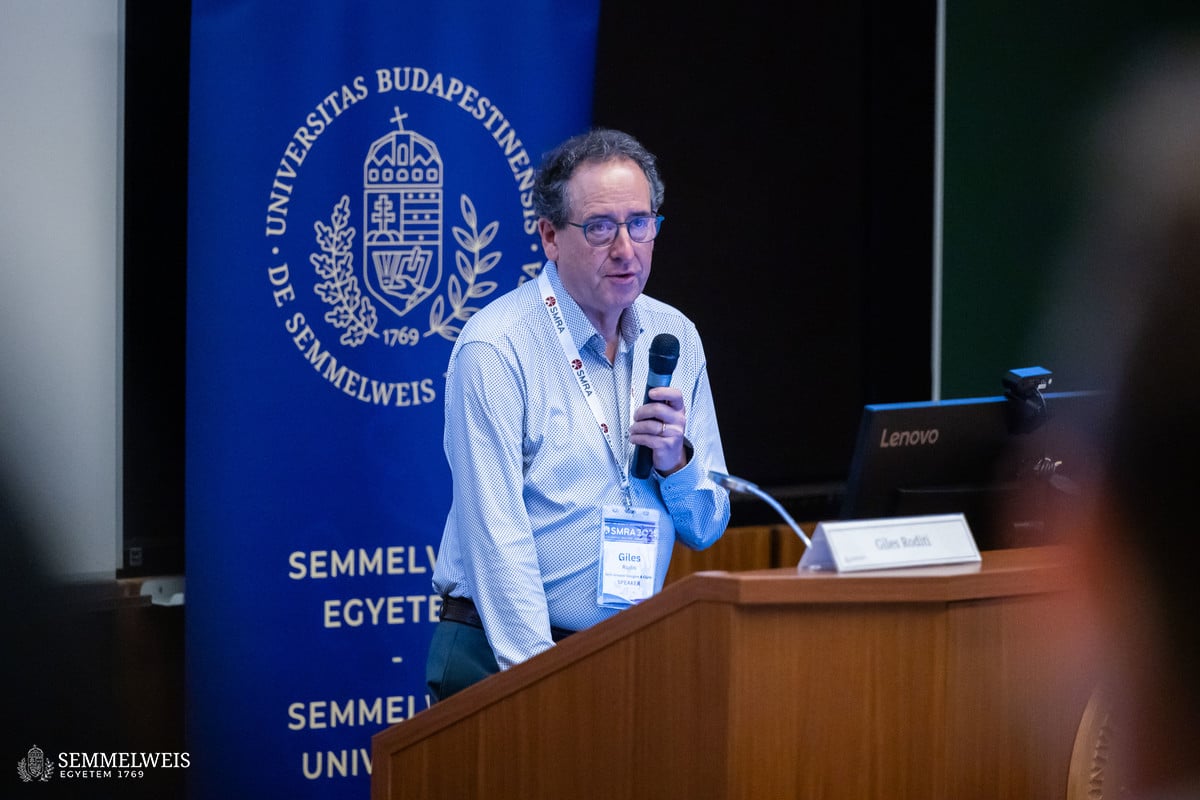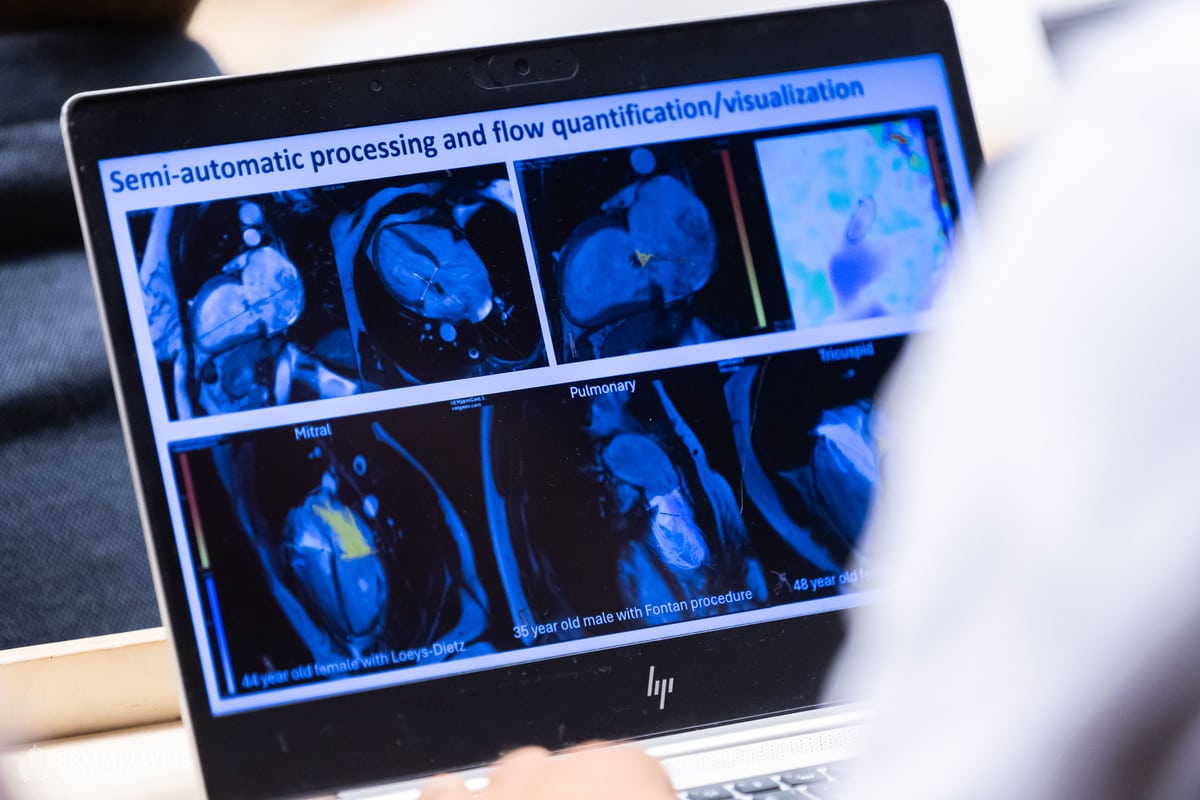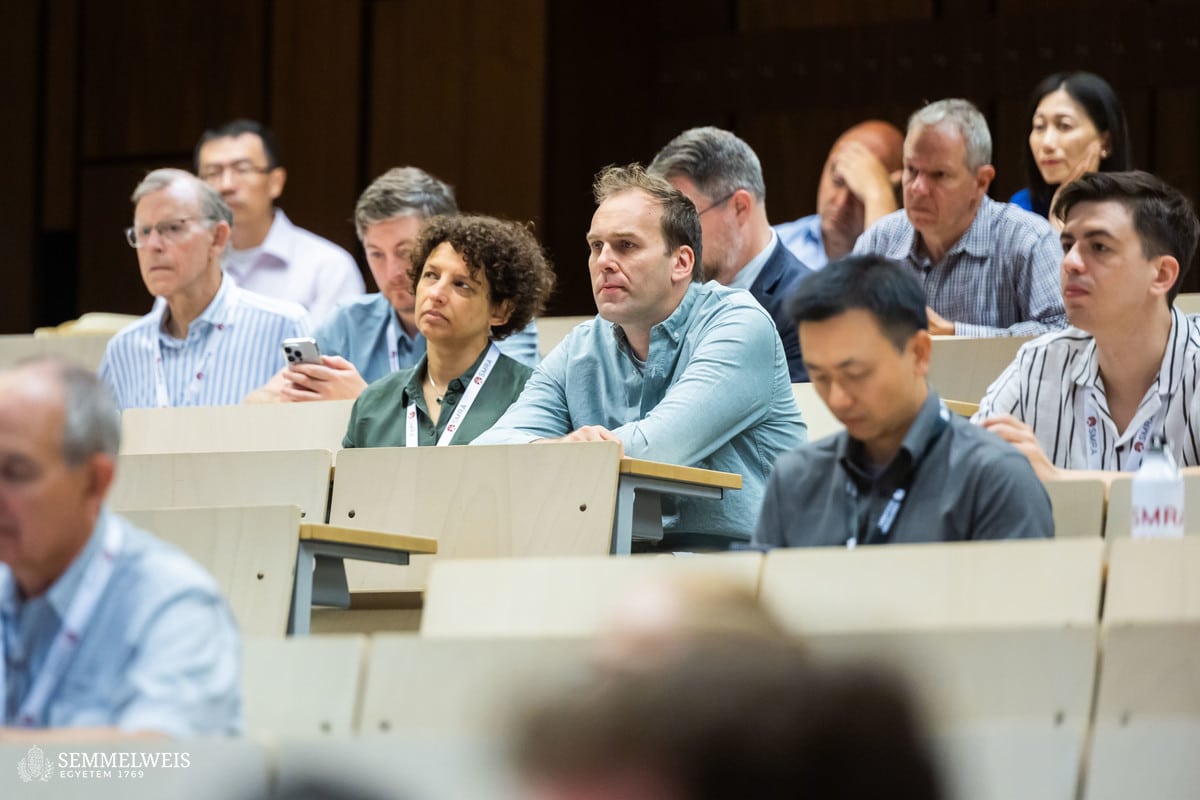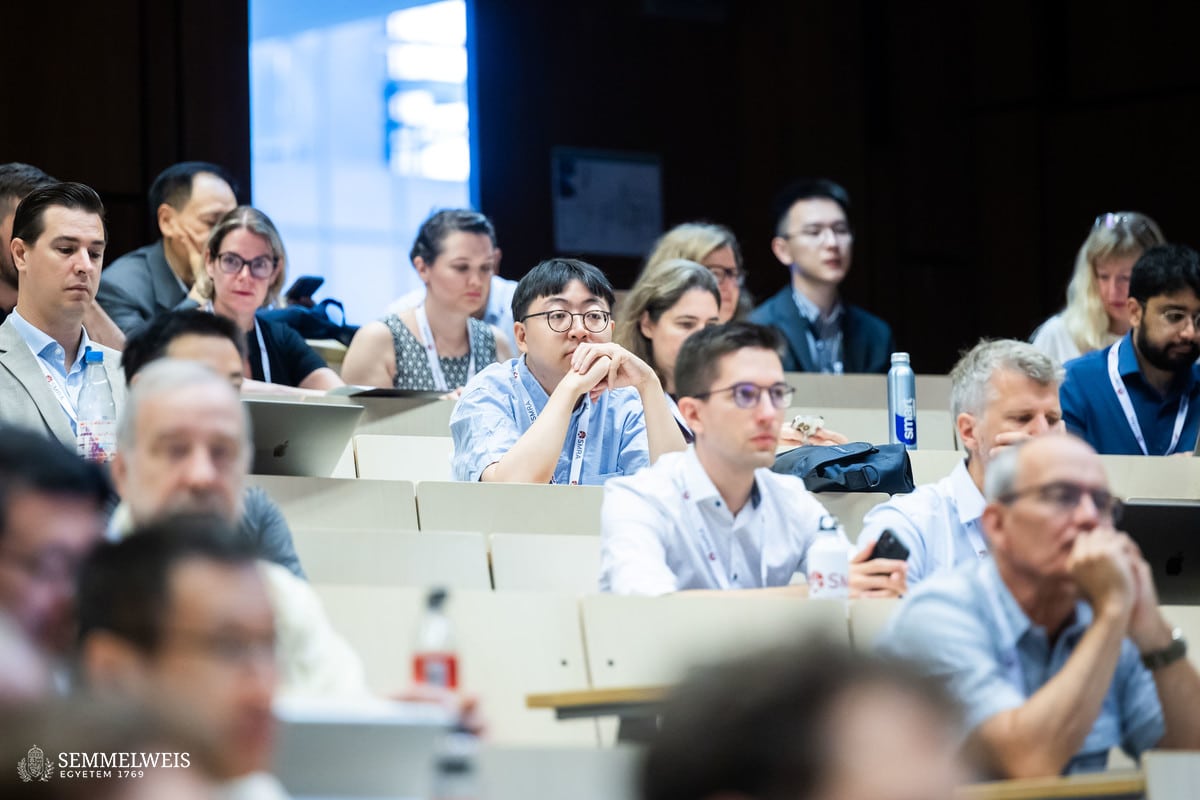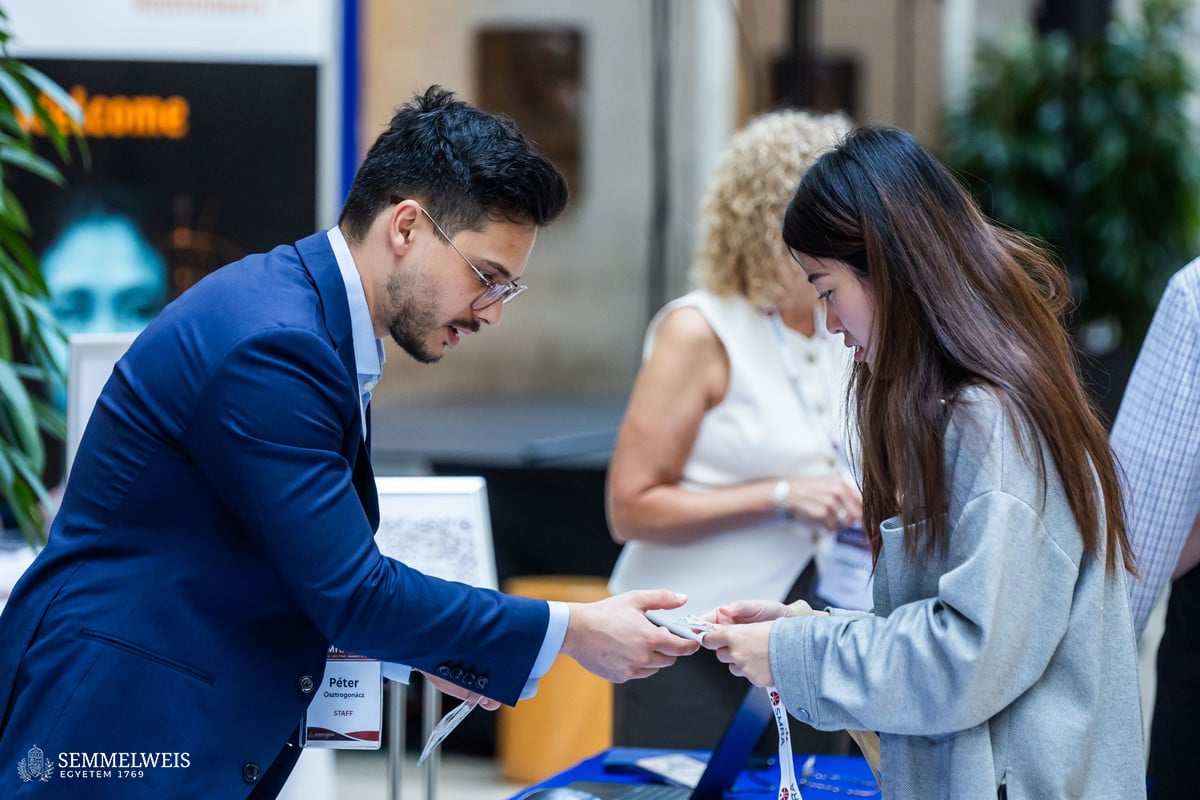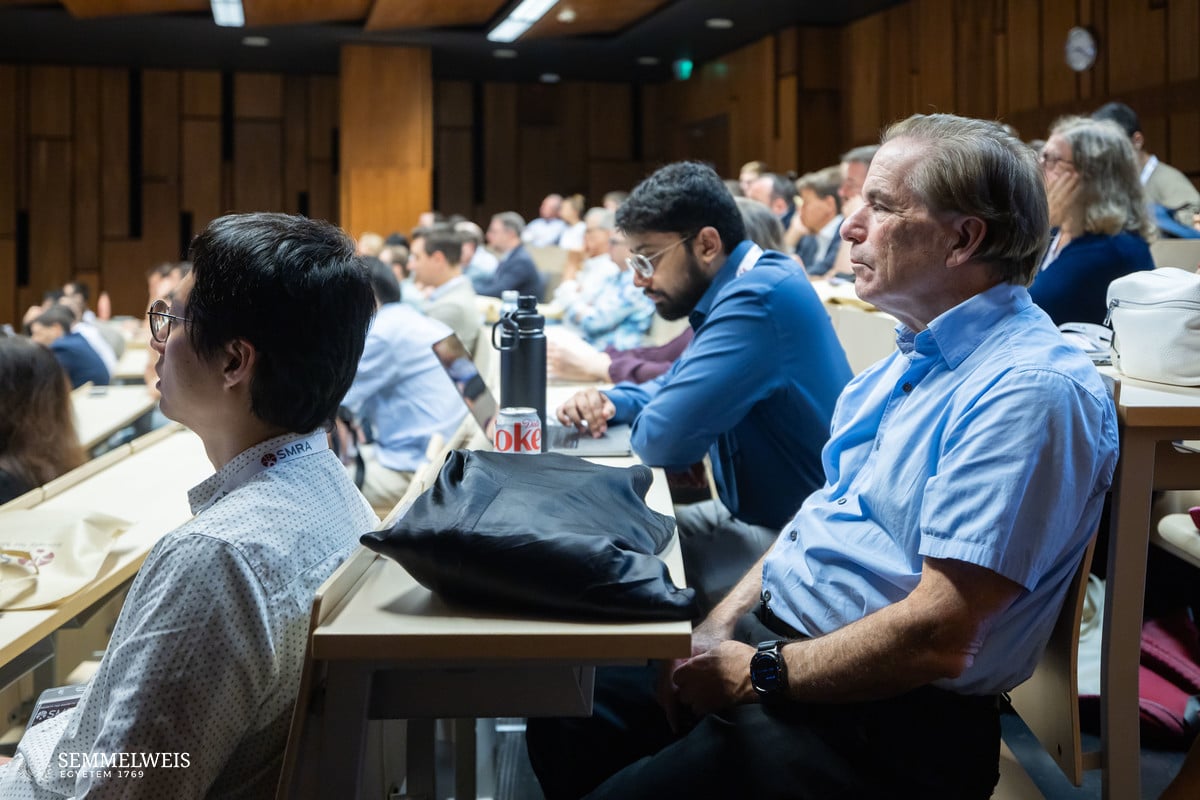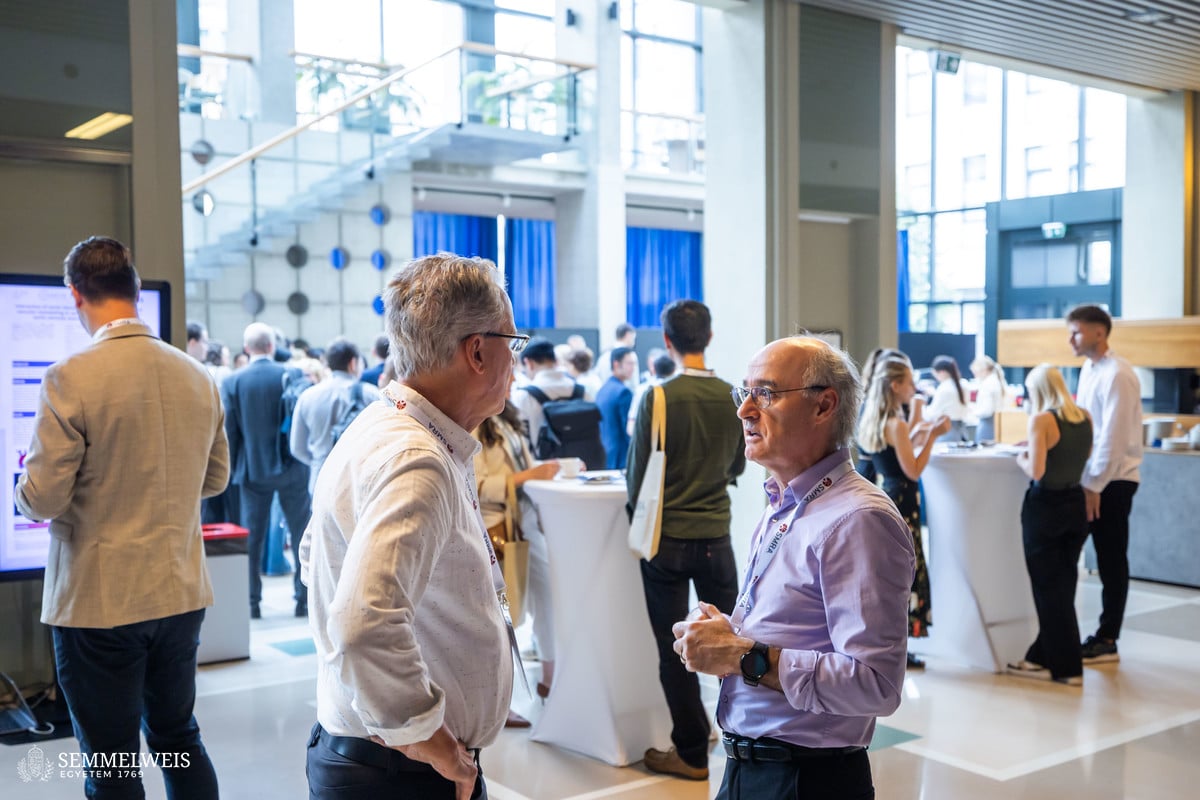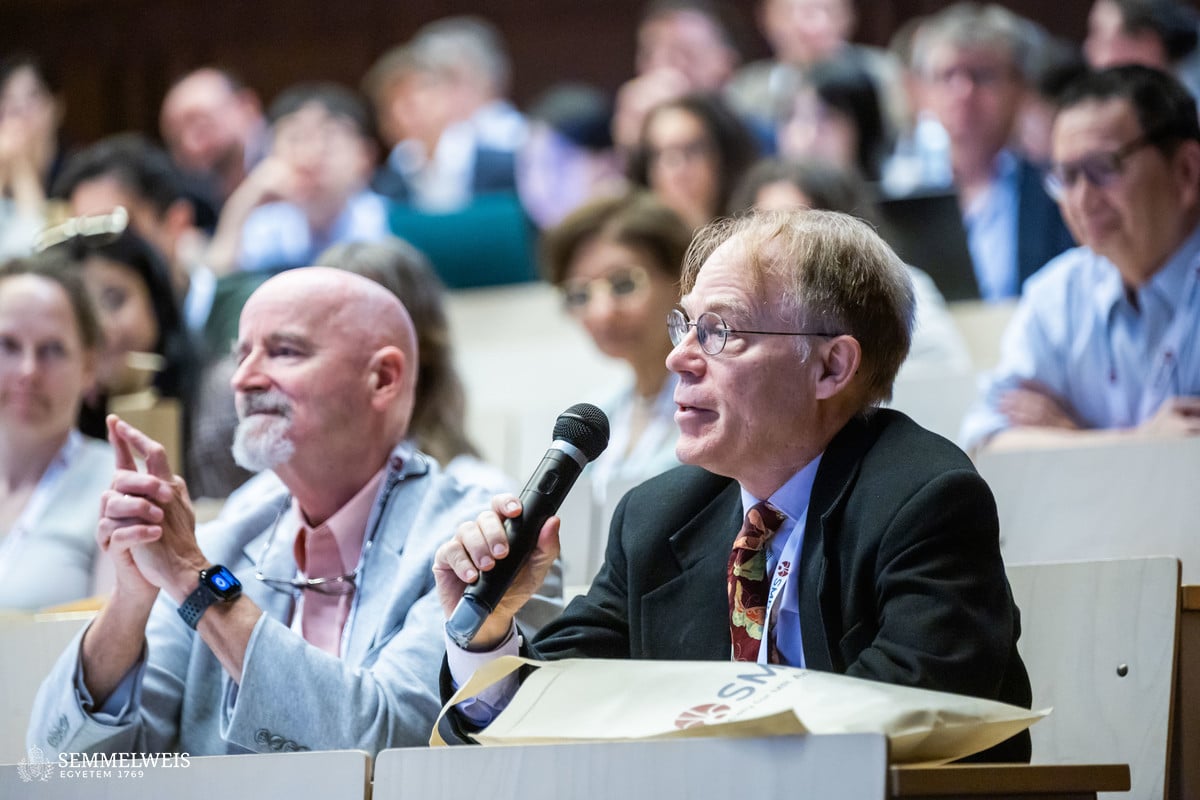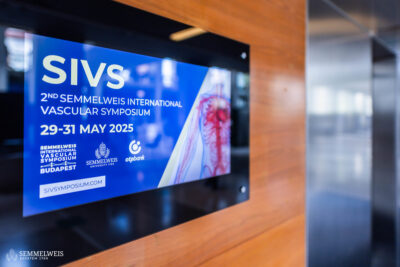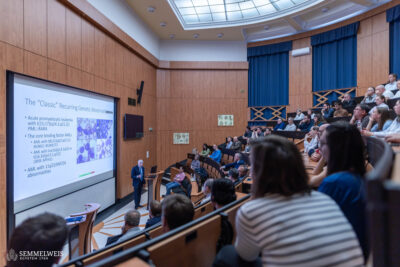The ceremonial opening of the 37th Annual International Meeting of the Society for Magnetic Resonance Angiography was moderated by Dr. Csaba Csobay-Novák, Head Physician of the Department of Interventional Radiology and Head of Diagnostic Imaging at the Városmajor Heart and Vascular Center, and Dr. Philippe Douek, Professor at Claude Bernard University Lyon. At the beginning of the plenary session, Dr. Judit Csőre, the chief local organizer of the conference and Assistant Lecturer at the Városmajor Heart and Vascular Center, gave a welcome speech. As she noted, what connects SMRA members are meaningful discussions, a shared interest in MR angiography, and the joy of meeting each other every year to review the latest advancements of their field and discuss its future directions.
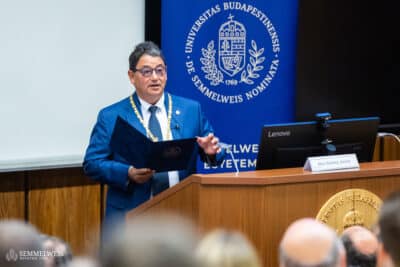 In his opening speech, Dr. Béla Merkely, Rector of Semmelweis University, emphasized that this was a special moment not only for the institution, but for the whole of Central and Eastern Europe because, for the very first time, this long-standing, prestigious meeting bringing together researchers and clinicians at the forefront of cardiovascular MR imaging from all over the world was being hosted in the region. “In the world of science, it is rare to find an event that represents a milestone in theoretical research, clinical practice, as well as in connecting innovation and education – all at once. This conference is one such occasion. It provides an opportunity to share our latest findings, launch new ideas, and work together to make the medical imaging of the future even more accurate, people-friendly, and efficient,” he added.
In his opening speech, Dr. Béla Merkely, Rector of Semmelweis University, emphasized that this was a special moment not only for the institution, but for the whole of Central and Eastern Europe because, for the very first time, this long-standing, prestigious meeting bringing together researchers and clinicians at the forefront of cardiovascular MR imaging from all over the world was being hosted in the region. “In the world of science, it is rare to find an event that represents a milestone in theoretical research, clinical practice, as well as in connecting innovation and education – all at once. This conference is one such occasion. It provides an opportunity to share our latest findings, launch new ideas, and work together to make the medical imaging of the future even more accurate, people-friendly, and efficient,” he added.
Dr. Jeremy Collins, Professor of Radiology at Mayo Clinic in the United States and President of SMRA, also welcomed the participants and thanked Dr. Martin Prince’s foundation, which supports the society’s activities. Finally, he invited Dr. Ferenc Krausz to deliver the talk named after the originator of the foundation (Martin Prince Lecture).
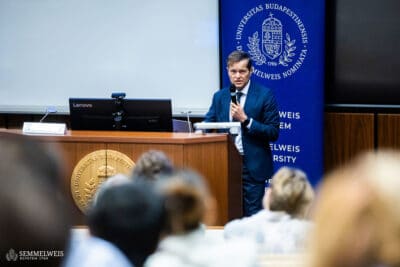 In his plenary lecture, the Nobel Prize-winning Hungarian physicist drew attention to the fact that basic research can give rise to technologies with the greatest social impact. He introduced the method of infrared electric-field-resolved molecular fingerprinting (EMF), which can detect minute changes in blood composition using ultrashort laser pulses. This technique could enable the early identification of the most common non-communicable diseases, such as cancer, cardiovascular disease, and metabolic disorders, which are responsible for the deaths of approximately 17 million people under the age of 70 worldwide each year. Dr. Ferenc Krausz presented the results of a study of blood samples from more than 900 cancer patients and control subjects: When combined with artificial intelligence, the method was able to distinguish between healthy and diseased samples with over 80 percent accuracy at certain stages. To further develop this, CMF launched the ten-year Health for Hungary – Hungary for Health (H4H) Program, in which 15,000 volunteers provide repeated blood samples to establish personalized molecular baselines. The goal is to develop a cost-effective screening method that can contribute to a new era of personalized prevention and health maintenance. To this end, CMF works closely with several clinics, including Semmelweis University’s Városmajor Heart and Vascular Center, he added.
In his plenary lecture, the Nobel Prize-winning Hungarian physicist drew attention to the fact that basic research can give rise to technologies with the greatest social impact. He introduced the method of infrared electric-field-resolved molecular fingerprinting (EMF), which can detect minute changes in blood composition using ultrashort laser pulses. This technique could enable the early identification of the most common non-communicable diseases, such as cancer, cardiovascular disease, and metabolic disorders, which are responsible for the deaths of approximately 17 million people under the age of 70 worldwide each year. Dr. Ferenc Krausz presented the results of a study of blood samples from more than 900 cancer patients and control subjects: When combined with artificial intelligence, the method was able to distinguish between healthy and diseased samples with over 80 percent accuracy at certain stages. To further develop this, CMF launched the ten-year Health for Hungary – Hungary for Health (H4H) Program, in which 15,000 volunteers provide repeated blood samples to establish personalized molecular baselines. The goal is to develop a cost-effective screening method that can contribute to a new era of personalized prevention and health maintenance. To this end, CMF works closely with several clinics, including Semmelweis University’s Városmajor Heart and Vascular Center, he added.
Dr. Pál Maurovich Horvat, Director of the Medical Imaging Center, focused his presentation on the development of photon-counting CT and its comparison with magnetic resonance angiography in cardiac imaging. He explained that the new technology, introduced at Semmelweis University in 2021 as among the first in the world, provides much higher resolution and more spectral information compared to conventional CT, while reducing noise, radiation dose, and the risk of complications. Clinical studies show that photon-counting CT is more effective at detecting coronary plaque, one of the main risk factors for heart attack. “The early detection and treatment of atherosclerosis to prevent acute cardiovascular disease events is likely to increase life expectancy in excess of 10 years,” he emphasized.
Dr. Aleksandra Radjenovic, Senior Lecturer at the University of Glasgow and President-Elect of SMRA, reflected on the current state and future directions of magnetic resonance angiography (MRA). She pointed out that although significant progress had been made in prevention and treatment, the global burden of cardiovascular disease is expected to rise sharply by 2050 due to population growth and aging. For this reason, future imaging must be comprehensive, precise, quantitative, reproducible, and widely accessible. The President Elect described promising advances such as non-contrast imaging, multiparametric mapping, and the use of artificial intelligence. She emphasized that the harmonization of methods and data was essential for the creation of a common, universal MRI language, an “MRI Esperanto,” which would enable large-scale studies and reliable clinical applications.
In his presentation, Dr. Giles Roditi, an expert at NHS Greater Glasgow & Clyde and Honorary Professor at the University of Glasgow, reviewed the evolution of contrast-enhanced MRA (CE-MRA) from the 1980s to the present day. He reported on major milestones such as 3D and parallel imaging, the emergence of dynamic techniques, and the transition to safer macrocyclic contrast agents. He explained that although modern agents are safer, their use also poses environmental challenges. Today, CE-MRA remains an important tool, especially when simultaneous examination of arteries and veins is required. Future developments will focus on new high-relaxivity agents allowing reduced doses, as well as the integration of AI and compressed sensing for more efficient and environmentally friendly imaging.
The sessions of the four-day conference focused on the following topics: advanced MRA applications (brain, heart, abdomen, extremities, pediatrics); low-field and ultrahigh-field MRI; quantitative flow imaging, vessel wall and thrombus imaging; interventional MRI; contrast agents; deep learning; image reconstruction and processing; preclinical and clinical study design. The scientific program also included some local flagship topics, such as sports cardiology. On the last day of the event, the society’s Junior Fellowship Award was presented to the winners. During the conference, participants also had the opportunity to establish further professional contacts at various networking events.
Dr. Balázs Csizmadia
Photos by Bálint Barta – Semmelweis University
